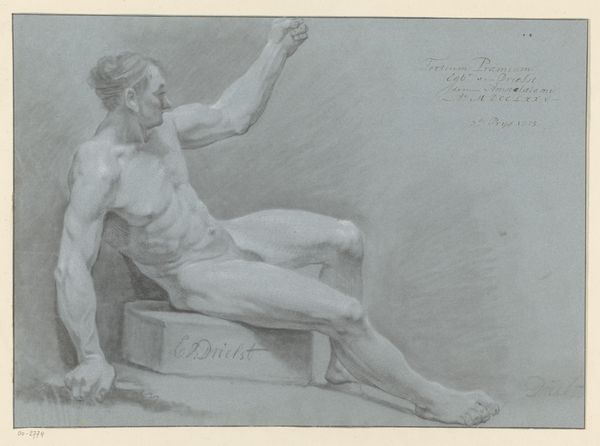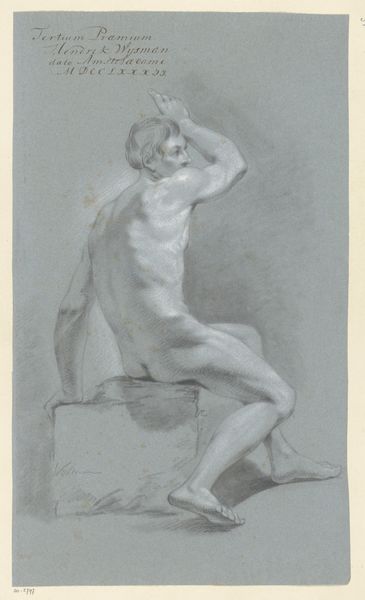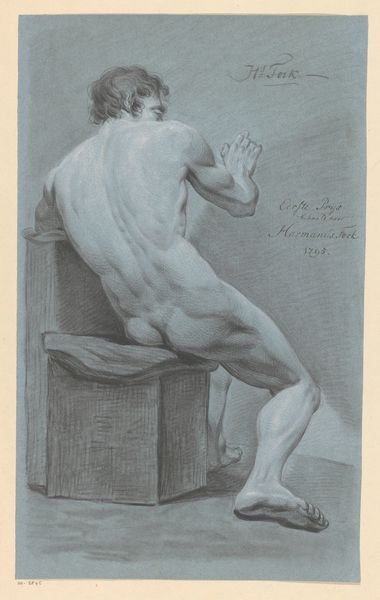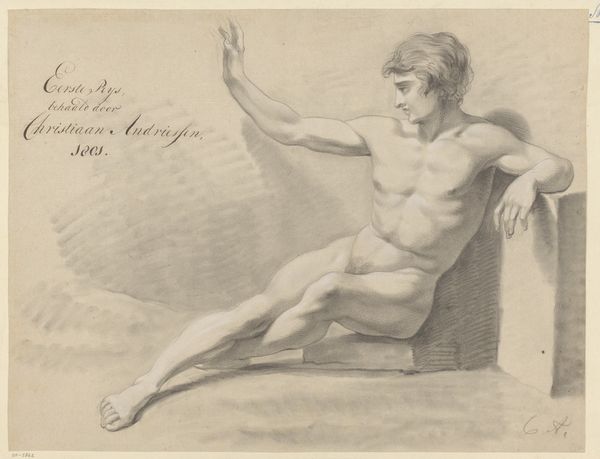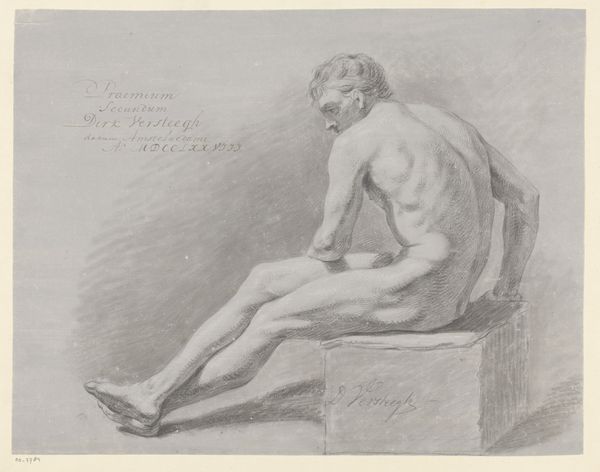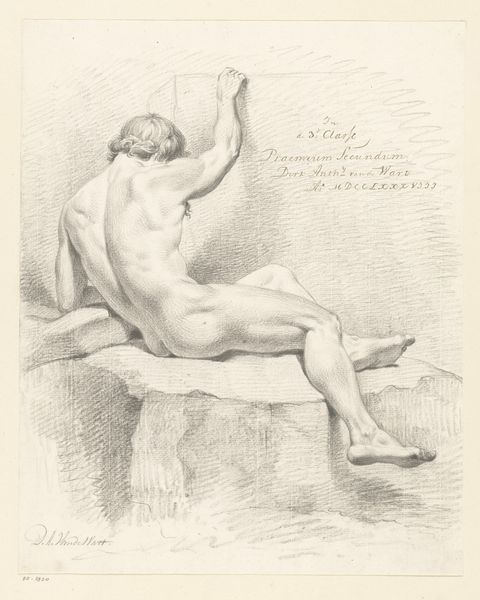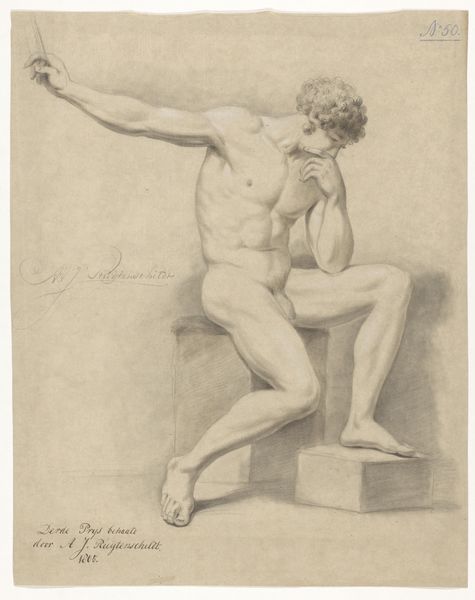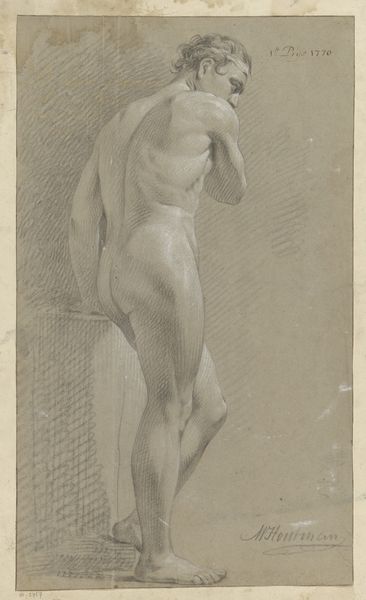
#
pencil drawn
#
amateur sketch
#
toned paper
#
light pencil work
#
pencil sketch
#
charcoal drawing
#
portrait reference
#
pencil drawing
#
portrait drawing
#
pencil work
Dimensions: height 411 mm, width 554 mm
Copyright: Rijks Museum: Open Domain
Editor: This is "Zittend mannelijk naakt, van opzij gezien (3e prijs 1774)", or "Seated Male Nude, Seen from the Side (3rd Prize 1774)" by Jean Grandjean, likely created in 1774 using pencil. It’s captivating how Grandjean captured the human form with such delicate shading on toned paper. How do you interpret the structure and composition of this drawing? Curator: The essence of this work resides in its masterful use of line and form. Note the economy of means with which Grandjean defines the musculature. The subtle gradations of tone across the figure, achieved through delicate pencil work, create a palpable sense of volume and weight. The positioning of the figure—seated on what appears to be a cubic form—introduces a geometrical counterpoint to the organic curves of the body. What do you observe in the subject's gesture? Editor: The raised hand…it's a striking element! It interrupts the otherwise grounded composition, almost reaching beyond the picture plane. It invites questions about meaning. Is there a connection between that raised hand and the cube upon which he sits? Curator: Precisely. That interplay between the subject and its surroundings is quite thought-provoking. Consider how the angles and planes of the cube contrast with the soft curves of the body. It could be argued the tension creates visual interest, subtly drawing the eye across the entire surface of the drawing. And yet, this looks like an award-winning life-drawing study! How does that frame your experience of it? Editor: Thinking about it as an award-winning study, I appreciate even more the careful observation of light and shadow, and the contrast between the angular block and the soft human form. The controlled handling of the pencil is quite impressive. Curator: Indeed. The piece exemplifies the enduring power of classical principles executed with remarkable sensitivity and control. There is clarity in form as it suggests an understanding of underlying geometric structure and semiotic theory.
Comments
No comments
Be the first to comment and join the conversation on the ultimate creative platform.
